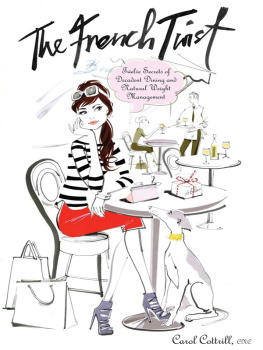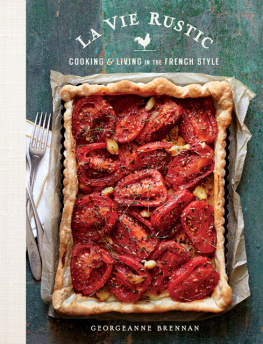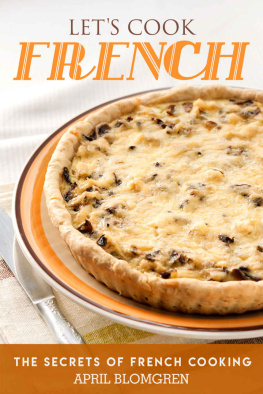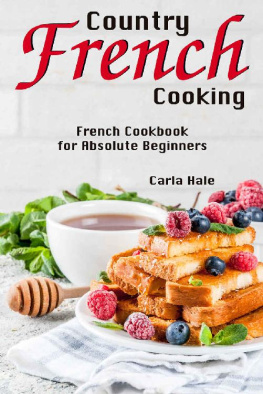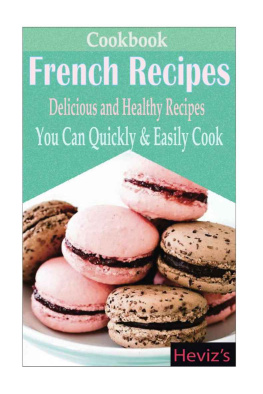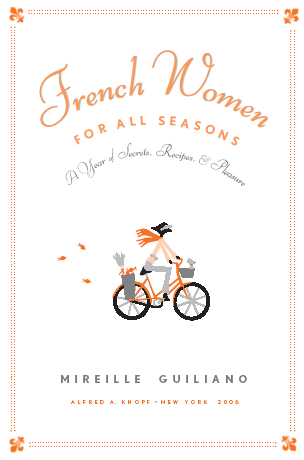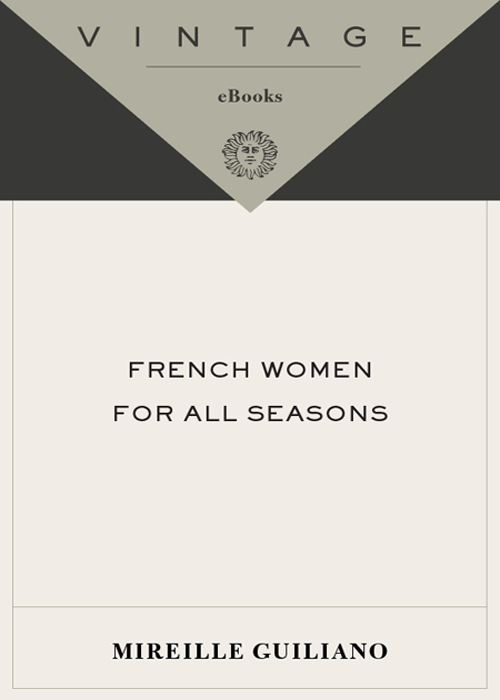
CONTENTS
Entracte:
The French Eat What?
Live in each season as it passes; breathe the air, drink the drink, taste the fruit, and resign yourself to the influences of each. Let them be your only diet drink and botanical medicines.
Henry David Thoreau

OUVERTURE
It was the best of times, it was the worst of times. Thus Charles Dickens began his Tale of Two Cities a century and a half ago. The cities he imagined were Paris and London. The countries he was contrasting were revolutionary France and late-eighteenth-century England. Two opposing worlds, two points of view. And two divergent destinies. When I wrote French Women Dont Get Fat, I had in mind two disparate worlds of eating: the French and the American. Also, to a lesser extent, two cities, Paris and New York. What I did not realize at the time was that I was in fact writing a tale of two global cultures increasingly without borders. For better and worse, where you live no longer dictates how you eat. Its up to you.
Even in our ever more complex world, it is still possible to have our cake and eat it too, to enjoy our days to the fullest in many ways while embracing a time-tested, back-to-basics approach to lifeone filled with quality, sensitivity, seasonal foods, and pleasure. I dont want to live in the past, but I do want to learn from it, and I believe that the culture of moderation, painstaking attention to taste, and healthy eating and living that I absorbed growing up in France can be adapted to todays world and pursued just about anywhere. This is not to say I dont understand or appreciate firsthand the challenges women these days face: the pressures of too much to do in too little time, of mega portions and industrially produced food often eaten on the run.
For a long time, this clash of cultural and lifestyle perspectives and outcomes took shape in my mind as a contrast between on the one hand fundamental elements of French culture and on the other behaviors I learned in America. But with the appearance of French Women Dont Get Fat in language after language, I have come to understand that what I thought of as a national divide is really only an emblem for a conflict of two world orders. While I certainly dont think I have all the solutions to this conflict, or any highly specialized expertiseI try not to take myself too seriouslyI still have more experiences and secrets (and many more recipes and weekly menus) to share that will help people enjoy a better quality of lifeand almost certainly lose weight.
Last fall a French reporter followed me through the Union Square Greenmarket in New York, where we encountered a class of eight-year-olds with their teacher. The kids were participating in a program called Spoons Across America, a not-for-profit organization dedicated to educating children, teachers, and families about the benefits of healthy eating and the value of supporting local farmers and sharing meals around the family table. As it was fall, apples of many varieties were abundantly available. But when the reporter, half kidding, picked one up and asked a little boy what it was, the child drew a blank. Forget the variety; he did not know it was an apple. This city kid had apparently never seen one in real life. It gives one pause. I would bet, though, that he could recognize the packaged apple pie at the McDonalds just opposite the greenmarket.
The world where I grew upand my experience of applesin Alsace-Lorraine could not have been farther from this little boys in New York City. As I recall it, all our neighbors had at least one fruit tree, and we had numerous apple trees in our garden. Come apple-picking time, my job was to place the different varieties we grew into little flat crates called cagettes, which we put into the cold cellar for winter storage a centuries-old practice now mostly gone. What sweet and glorious aromas filled that cellar when I deposited all those baskets! (Tellingly, in French the word for smell, sentir, also means feel.) Today I recall the apple smell even more powerfully than the old footage of that autumn ritual I carry around in my head. And, of course, the harvest meant my mother would once again make an apple pie, une tarte aux pommes alsacienne.
In our garden we also had bushes of groseilles, tart red currants that are a regional specialty. My mother and I loved to make pies with these tiny berries. The season for red currants is short, and we quickly made jam (confiture) or jelly (gele) or pies, and sometimes a sauce (coulis). And oh, how we looked forward to this once-a-year treat, which somehow exemplifies for me the French womans psychological pleasure in food. It is the anticipation and joy that we gain from a pleasure we cannot take for granted and know we will soon lose. Tasting such seasonal bounty heightens our awareness of what we put into our mouths and contrasts with routine, mindless eating that provides little pleasure and often unwanted pounds.
These days, an image I carry around with me is of two airports. Its fitting, since airports are now the crossroads of the world, the most common interface of one culture with another. At OHare International, in Chicago, on the way to an appearance on the Oprah show, I witnessed a surreal spectacle I wish I had videotaped. People all around me in the terminal were gulping down hamburgers, fries, and pizza and knocking back big tubs of soda or coffee as they tapped away on their laptops, talked on cell phones, and flipped through newspapers. Most remarkable: it was 10 a.m. Why were they even eating? I asked myself. Breakfast? Early lunch? Or just a way to pass the time? It looked more like stuffing than eating, actually. And most of the people I saw were significantly overweight. Plus, I could not detect pleasure on a single face. On my way back to New York, it was equally disturbing to see the airport bars doing a brisk business at 3 p.m. Here and there, however, one could spot people not of this place: American abstainers from the madness? Or perhaps visitors just passing through? Anyway, these people reminded me of the French approach.
The airportcumfood court may be a sign of the times, but not quite yet in France. At Charles de Gaulle (or Roissy, as the French call it), the busiest hub on the Continent, when French people eat, they still generally sit down with a knife and fork at enclosed cafeterias or restaurants. There are small stand-up bars for those who want a quick croissant or perhaps a jambon beurre and a cup of coffee. But have you seen a typical French cup of coffee? Three sips, four max. No frappuccino gargantuoso con lateria or whatever (though Starbucks has followed McDonalds as a global brand). In France, if you want milk, you order a crme or even a grand crmeadd a few more sips. The airports may still reflect the traditional differences, for the most part, but they also show that infiltration is taking place in both directions. Things in France arent yet set up to accommodate the contemporary culture of excess, but where theres a will, theres a way: in the odd corner you do find people engaging in alien habits, with two sandwiches, an iPod, and a magazine feeding them all at once. But in France they are the exception; in America they rule.
Next page


